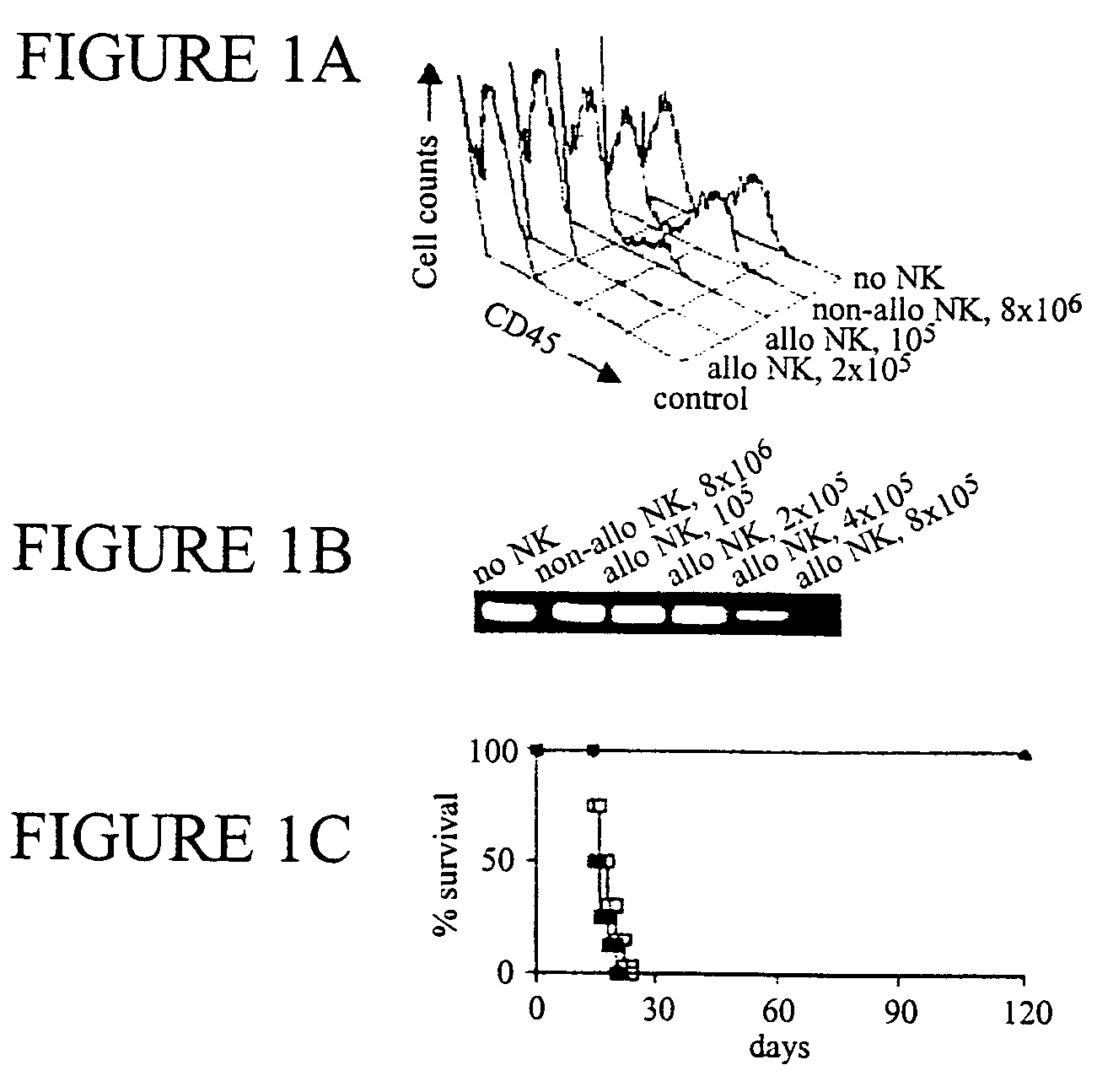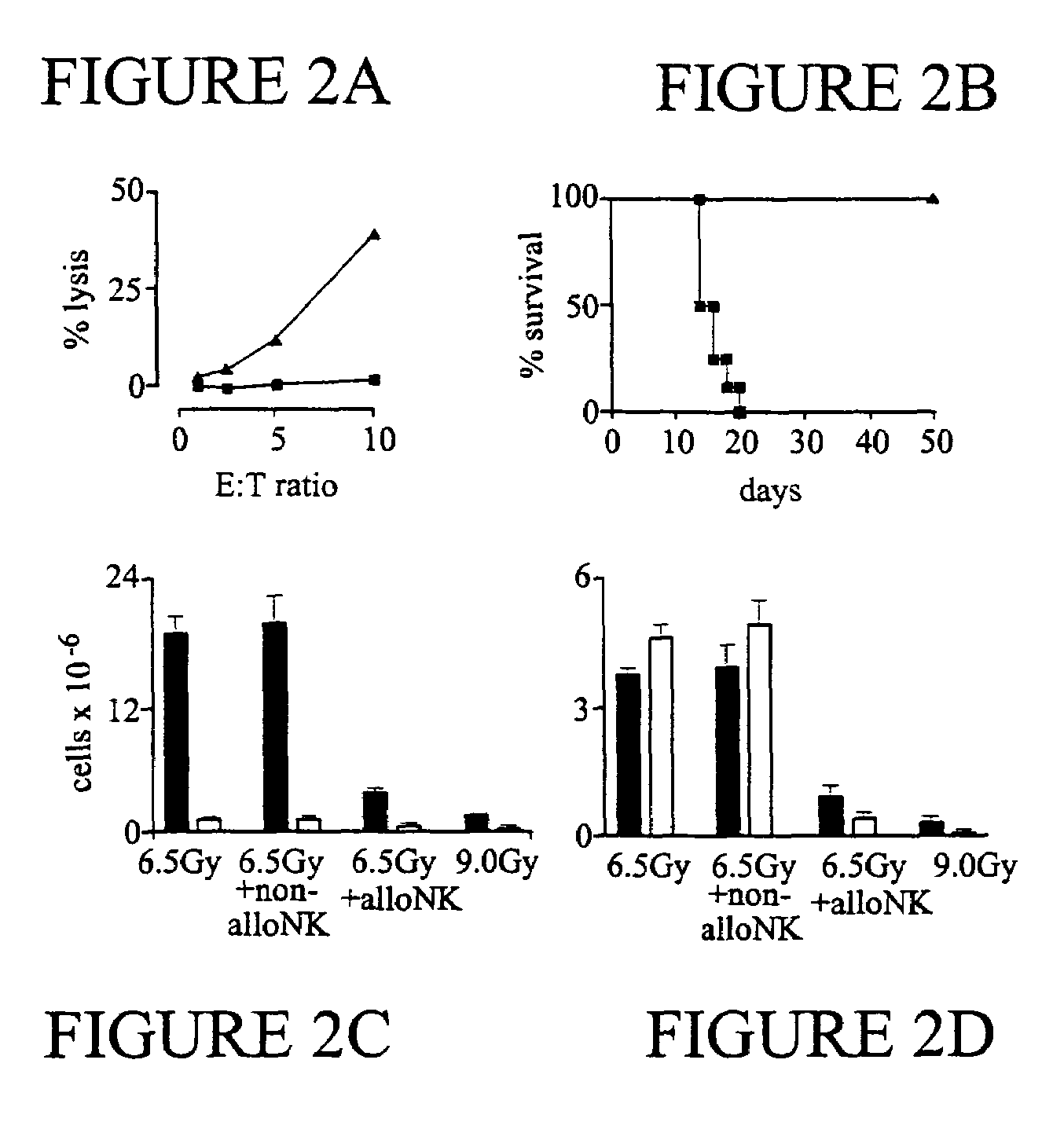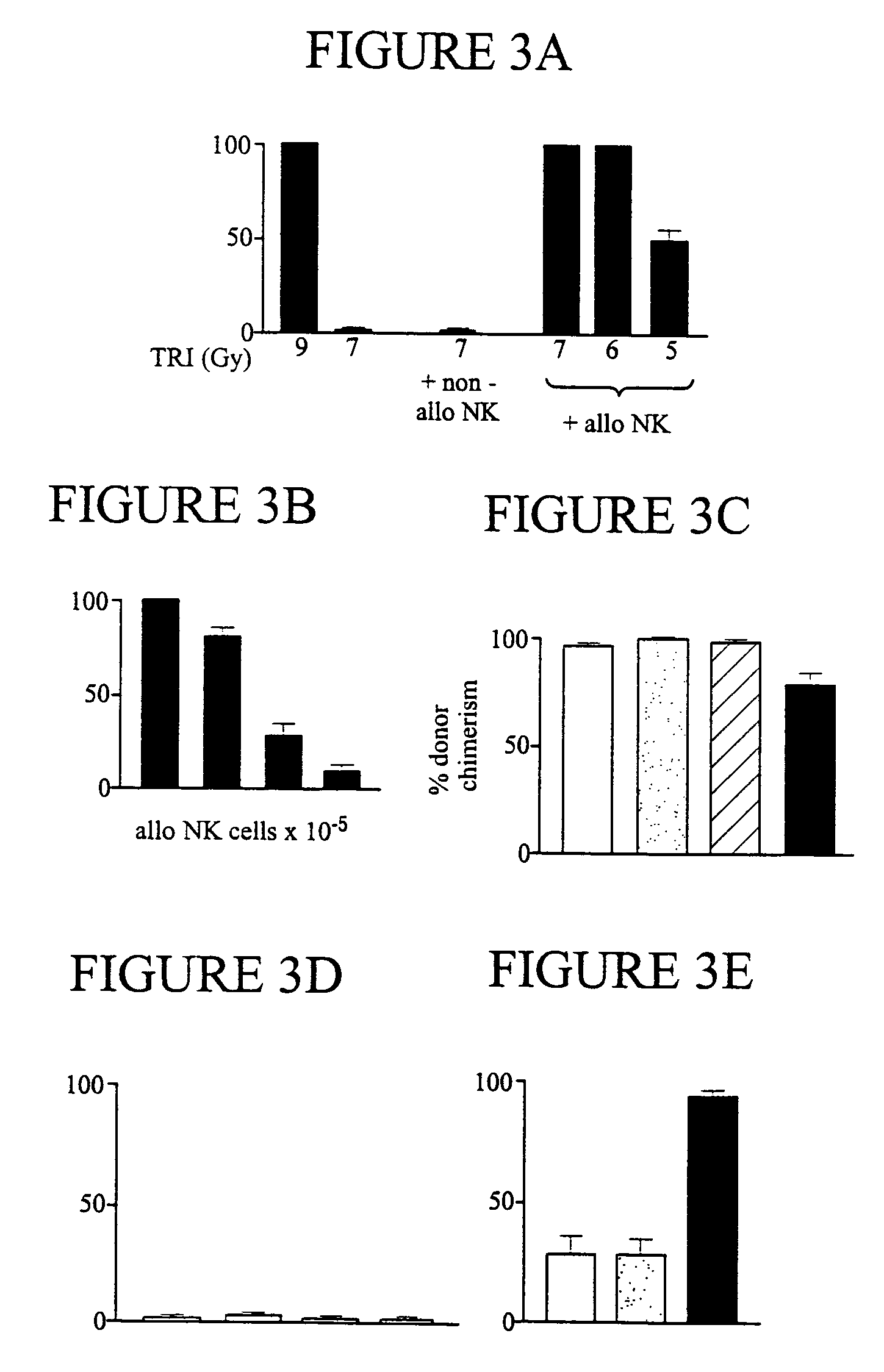Methods and compositions for allogeneic transplantation
a technology of allogeneic grafts and compositions, applied in the field of allogeneic graft compositions, can solve the problems of reducing the success of engraftment, gvl effect, and 60% of patients' matched siblings, and achieve the effect of enhancing the efficacy and safety of allogeneic grafts and significant reducing gvhd
- Summary
- Abstract
- Description
- Claims
- Application Information
AI Technical Summary
Benefits of technology
Problems solved by technology
Method used
Image
Examples
examples
[0064]In clinical transplantation and in mouse transplant models, we determined the impact of donor-versus-recipient NK cell alloreactivity on relapse, rejection, GVHD, and survival. One hundred and twelve high-risk acute leukemia patients received hematopoietic transplants from HLA haplotype-mismatched family donors (Martelli et al, 2002; Aversa et al, 1994, 1998). Typing of the HLA-C locus was available in 92 of these individuals [of whom 57 had AML and 35 had acute lymphoid leukemia (ALL)], and so only these transplants were analyzed in this study. HLA was assessed by serologic and molecular typing. All transplant pairs were mismatched at the HLA-A, -B, -C, and DR loci of one haplotype and matched at the other. Primary engraftment was achieved in 90.2%, GVHD occurred in 8.6%, and event-free survival was seen in 26% of AML patients and 8% of ALL patients. “Event free” denotes survival without rejection, chronic GVHD, leukemia relapse, or infection. All patients had a minimum follo...
PUM
| Property | Measurement | Unit |
|---|---|---|
| body weight | aaaaa | aaaaa |
| hematologic disorder | aaaaa | aaaaa |
| compositions | aaaaa | aaaaa |
Abstract
Description
Claims
Application Information
 Login to View More
Login to View More - R&D
- Intellectual Property
- Life Sciences
- Materials
- Tech Scout
- Unparalleled Data Quality
- Higher Quality Content
- 60% Fewer Hallucinations
Browse by: Latest US Patents, China's latest patents, Technical Efficacy Thesaurus, Application Domain, Technology Topic, Popular Technical Reports.
© 2025 PatSnap. All rights reserved.Legal|Privacy policy|Modern Slavery Act Transparency Statement|Sitemap|About US| Contact US: help@patsnap.com



